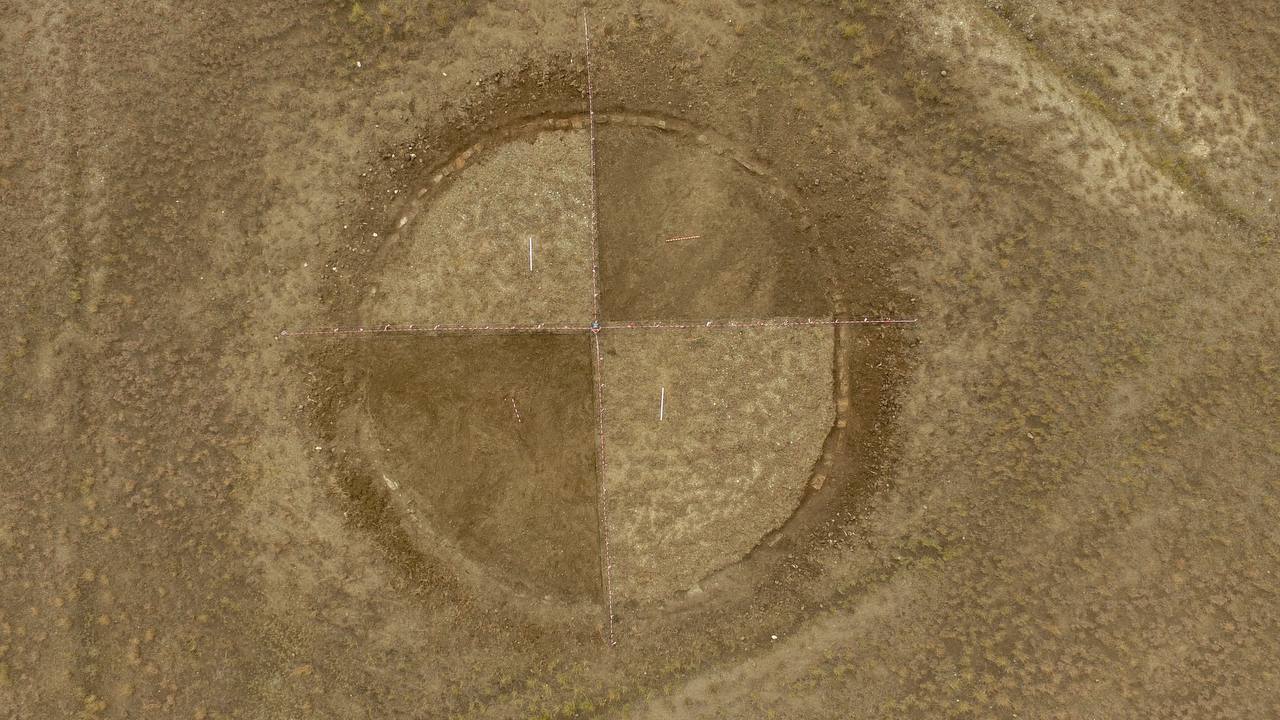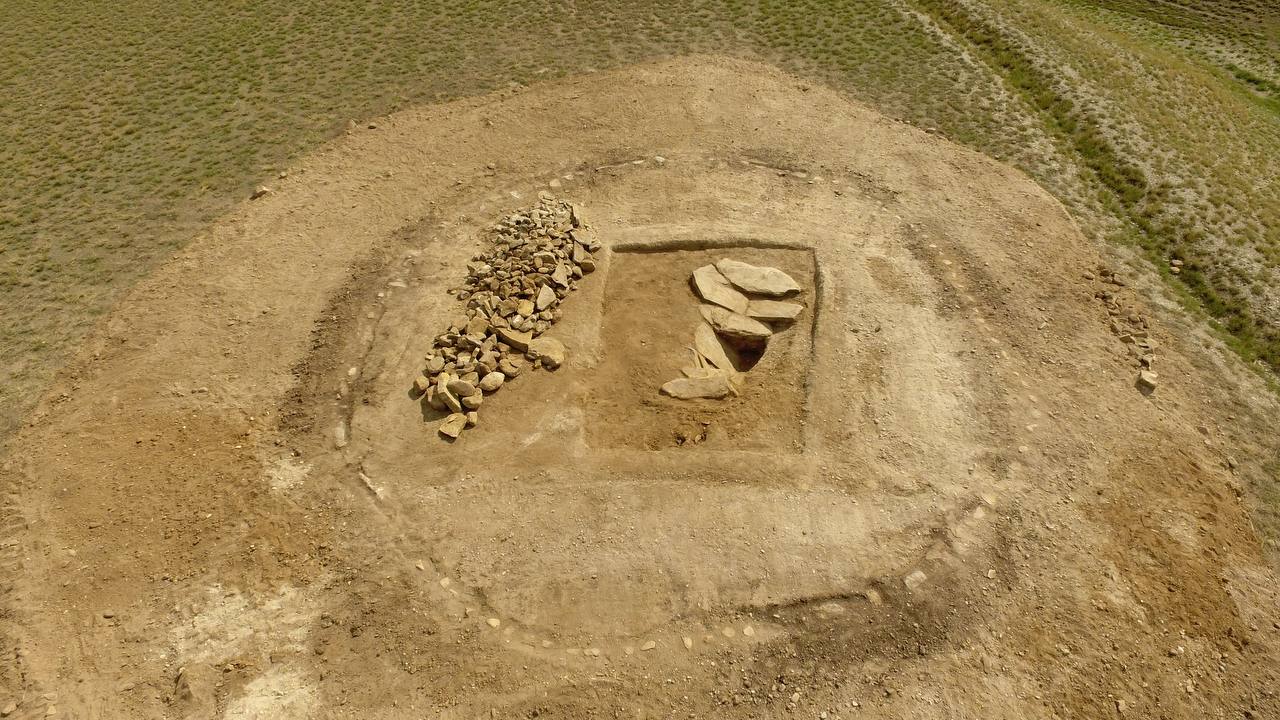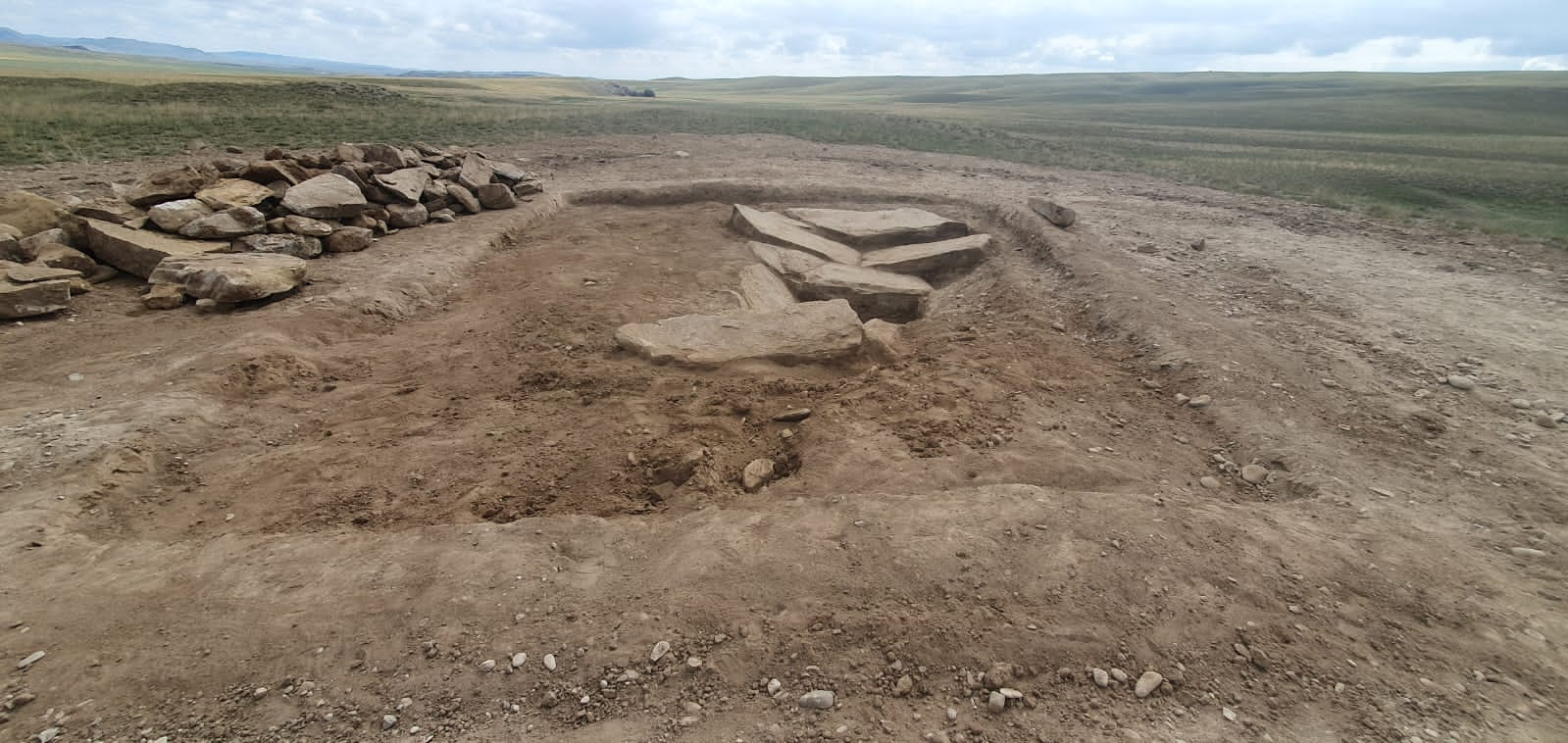Title: Qarasoý Kurgans
Location: Jeyranchol, Keshikchidagh Kurgan Valley
Date of Discovery: September 7, 2023 – October 6, 2023
Period: Late Bronze – Early Iron Age (Khojaly-Gadabay Culture)
The Qarasoý plain, as part of the low-mountainous Jeyranchol region, encompasses the left plain and the right low-mountainous section of the Qarasoý River valley, which feeds into the Achidara River. The Qarasoý kurgans extend along the plain at the southwestern foothills of the ridge where the Keshikchidagh caves are located. The area, consisting of steppe-like terrain, hosts kurgans positioned at intervals of approximately 10–15 meters from one another.
The kurgans vary in size, with larger ones having diameters of 20–25 meters and smaller ones measuring 10–15 meters in diameter. The majority of these burial mounds are encircled by cromlechs. These cromlechs, which are clearly visible at first glance, form circular enclosures around the base of the kurgans. In the larger kurgans, the cromlechs are composed of massive rock boulders, while in the smaller ones, they are constructed using relatively smaller river stones and slab-like rocks. In both cases, the stones used are predominantly rectangular and elongated in shape. The upper covering of the kurgans varies: in some cases, it consists entirely of small river stones, whereas in others, it is made of soil mixed with gravel.





